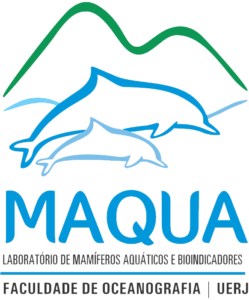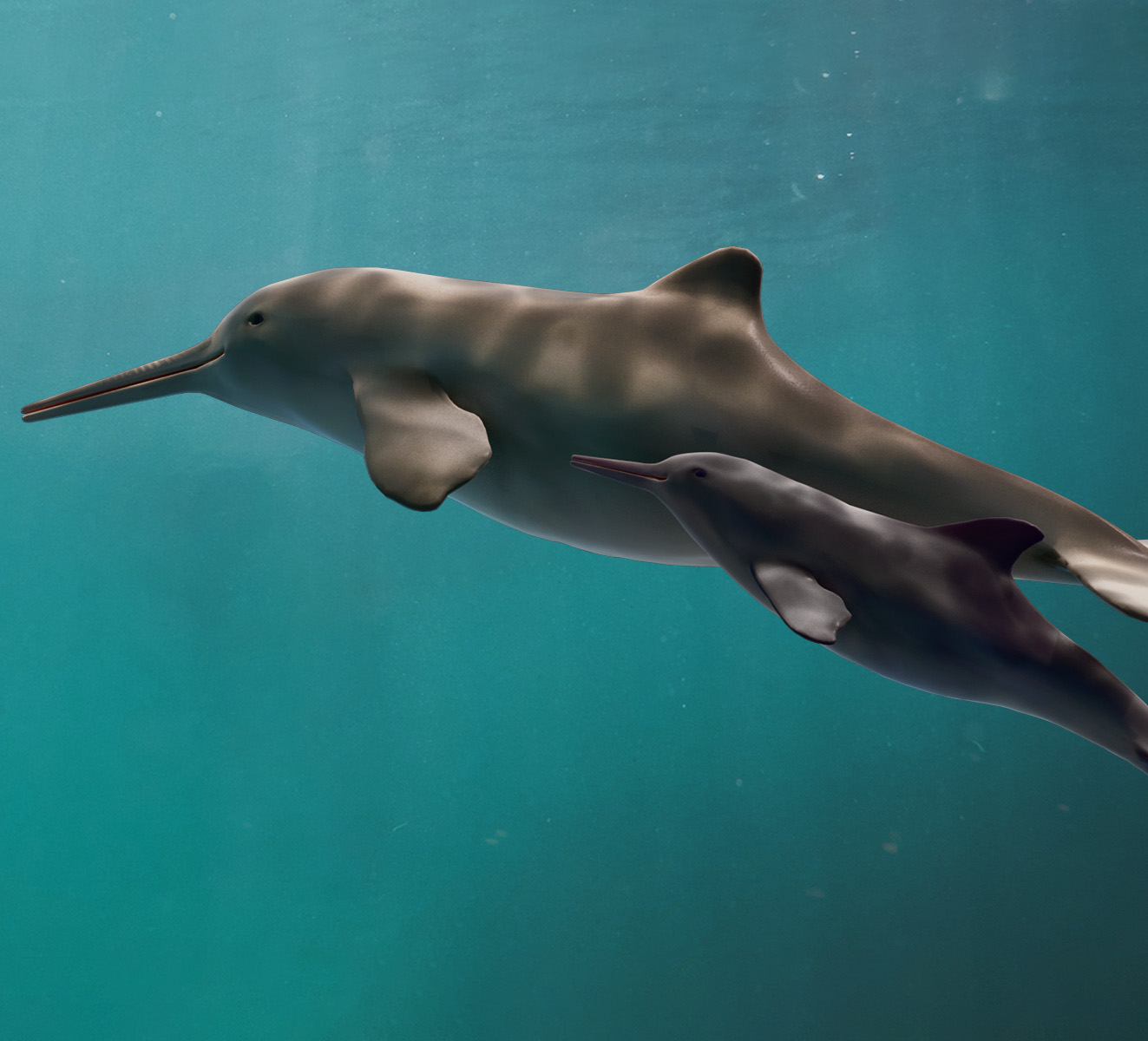SCROLL
REALIZATION:

SUPPORT:

REALIZATION:

SUPPORT:


The project Conservação da Toninha is an environmental offset measure established through a Consent Decree/Conduct Adjustment Agreement between PetroRio and the Brazilian Ministry for the Environment.
OUR
STAR
They are small, shy and rare, and they only live here, on the coast of the Western South Atlantic – from the San Matias Gulf, in the province of Chubut, Argentina, to Itaúnas, in northern Espírito Santo State, Brazil. Pontoporia blainvillei is its scientific name, but it is known popularly as the franciscana dolphin, the La Plata dolphin, the toninha (in Portuguese) or even, depending on the region, the pink dolphin, cachimbo, manico, golfinho-do-rio-da-prata, boto-garrafa and boto-amarelo. One of the smallest cetaceans of the world, it is just 1.5 meters long and, has an unmistakable long and narrow beak, more than 200 little teeth, and a grayish-brown color.
Unlike some species of cetaceans, they do not like to leap into the air or surf waves, and are very skittish of watercraft… Moreover, since they only come to the surface to breathe briefly and soon dive again, every photo taken of one is a cause for celebration among researchers. They are usually aerial photos and videos taken from airplanes or by drone. And, rarely, from boats – if one is lucky enough to click at the precise moment that some part of the animal emerges from the water.
SCIENTIFIC NAME
Pontoporia
blainvillei
IN ENGLISH AND SPANISH
Franciscana
IN BRAZIL,
BEST KNOWN
AS
TONINHA
IN BRAZIL,
BEST KNOWN
AS
TONINHA
THE
VIRTUAL
MUSEUM
EXPERIENCE 01
The Museu das Toninhas has arrived to raise awareness about this beloved animal, considered an endangered species by the Brazilian Institute of Environment and Renewable Natural Resources (IBAMA), and a vulnerable species by the International Union for the Conservation of Nature (IUCN).
Here, you will find a mix of actual photographs of the species in its natural habitat, along with 3D-modeled images, which allow you to approach and interact with the shy franciscana dolphins. Learn about the history of the evolution of this animal, its anatomy, ecology, habits, reproduction, its main threats and what has been done for its conservation. All gathered in a totally imagined place, with an architecture that references the silhouette of the small cetacean, at the sea shore.
MAP
OF
THE
MUSEUM
MAP
OF
THE
MUSEUM
IN THE SEA
WITH THE
FRANCISCANA DOLPHINS
EXPERIENCE 02
You are invited to take a dive to observe the franciscana dolphins in their habitat. Experience #2 – 100% virtual – reproduces the tones and elements of the coastal waters of Ilha Grande Bay, in Rio de Janeiro, where a population was recently discovered. In this experience, you will see franciscana dolphins swimming with their offspring, along with fishes and mollusks that are part of their diet.

TAKE
YOUR PHOTO
WITH THE
FRANCISCANA DOLPHIN
The game here is to take an unusual photo of the franciscana dolphin in Instagram. It can be at home, on the street, on a bus, wherever you want! An augmented reality to have some fun and help to raise awareness about our star. Play around, taking it from a creative angle, and then post it, to help spread the word about #museudastoninhas
WHO
DID IT
The Laboratory of Aquatic Mammals and Bioindicators, of UERJ, has been researching cetaceans since 1992, when a group of its (then) students founded Maqua. Coordinated by oceanographers José Lailson Brito Junior and Alexandre de Freitas Azevedo, today it is a benchmark in the study not only of aquatic mammals, but also of fish and turtles, and has a structure of laboratories and equipment for field studies, and a team of more than 40 people.
Recently (in 2020), Maqua researchers discovered a population of franciscana dolphins in Ilha Grande Bay, which they have been keeping tabs on and recording in beautiful images. And they even rescued a young animal that was tangled in fishing lines. The idea of the museum arose to bring the franciscana dolphin closer to the public, believing that knowledge is essential for the species’ conservation.
GET TO KNOW OTHER GROUPS THAT STUDY THE SPECIES IN BRAZIL, SUPPORTED BY THE TONINHAS CONSERVATION PROJECT:
GET TO KNOW OTHER GROUPS THAT STUDY THE SPECIES IN BRAZIL, SUPPORTED BY THE TONINHAS CONSERVATION PROJECT:
GEMARS
Grupo de Estudos de Mamíferos Aquáticos do Rio Grande do Sul
IBJ
Instituto Baleia Jubarte
Ecomega-furg
Laboratório de Ecologia e Conservação da Megafauna Marinha da Universidade Federal do Rio Grande
GECOM-UFES
Grupo de Estudos para a Conservação de Mamíferos da UFES, São Mateus-ES.
Lec-UFPR
Laboratório de Ecologia e Conservação da Universidade Federal do Paraná
BIOPESCA
Instituto Biopesca
Projeto Toninhas-univille
Universidade da Região de Joinville
INSTITUTO ORCA
Organização Consciência Ambiental
GEMARS
Grupo de Estudos de Mamíferos Aquáticos do Rio Grande do Sul
Ecomega-furg
Laboratório de Ecologia e Conservação da Megafauna Marinha da Universidade Federal do Rio Grande
Lec-UFPR
Laboratório de Ecologia e Conservação da Universidade Federal do Paraná
Projeto Toninhas-univille
Universidade da Região de Joinville
IBJ
Instituto Baleia Jubarte
GECOM-UFES
Grupo de Estudos para a Conservação de Mamíferos da UFES, São Mateus-ES.
BIOPESCA
Instituto Biopesca
INSTITUTO ORCA
Organização Consciência Ambiental